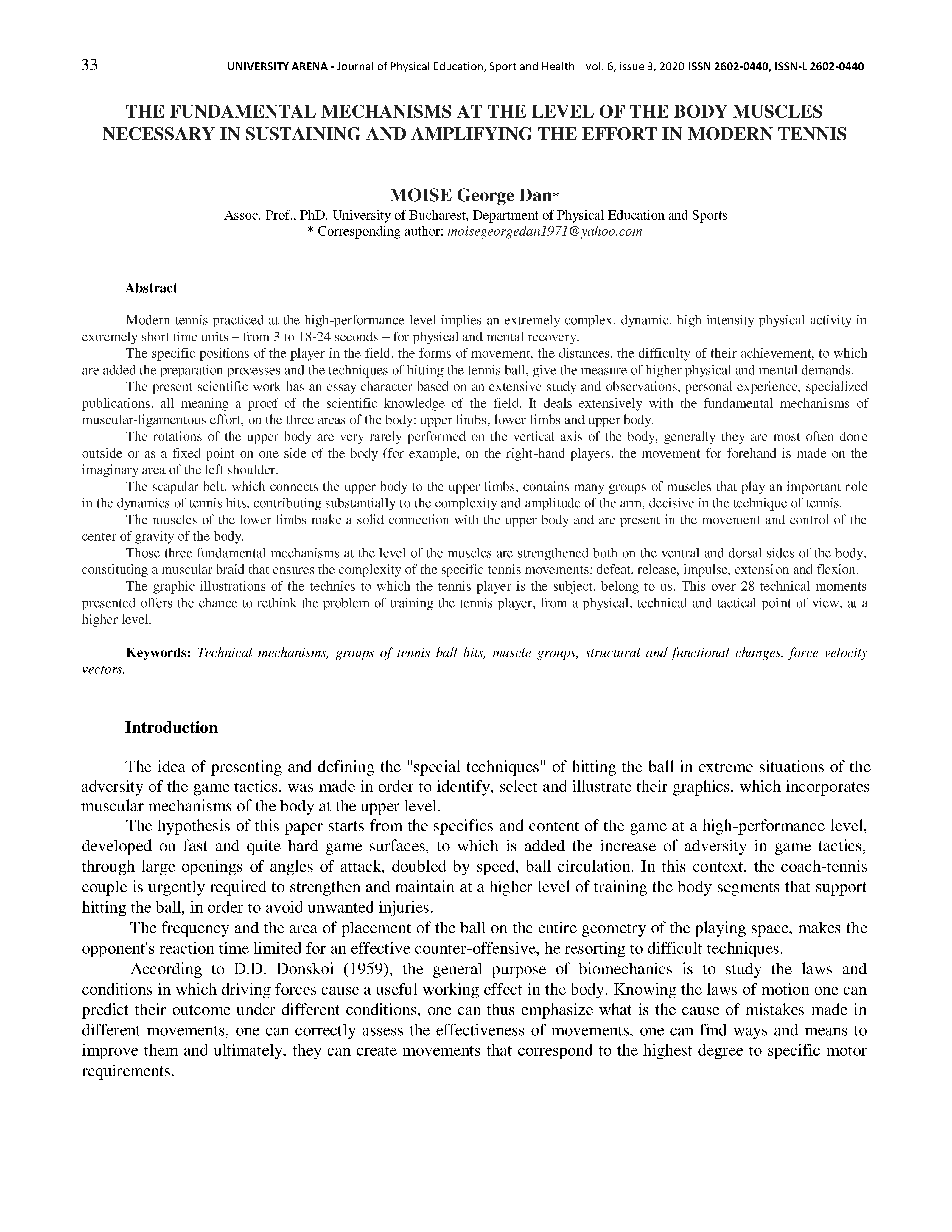THE FUNDAMENTAL MECHANISMS AT THE LEVEL OF THE BODY MUSCLES NECESSARY IN SUSTAINING AND AMPLIFYING THE EFFORT IN MODERN TENNIS
DOI:
https://doi.org/10.62229/UaVi_3_20-5Keywords:
Technical mechanisms, groups of tennis ball hits, muscle groups, structural and functional changes, force-velocity vectorsAbstract
Modern tennis practiced at the high-performance level implies an extremely complex, dynamic, high intensity physical activity in extremely short time units – from 3 to 18-24 seconds – for physical and mental recovery.
The specific positions of the player in the field, the forms of movement, the distances, the difficulty of their achievement, to which are added the preparation processes and the techniques of hitting the tennis ball, give the measure of higher physical and mental demands. The present scientific work has an essay character based on an extensive study and observations, personal experience, specialized publications, all meaning a proof of the scientific knowledge of the field. It deals extensively with the fundamental mechanisms of muscular-ligamentous effort, on the three areas of the body: upper limbs, lower limbs and upper body. The rotations of the upper body are very rarely performed on the vertical axis of the body, generally they are most often done outside or as a fixed point on one side of the body (for example, on the right-hand players, the movement for forehand is made on the imaginary area of the left shoulder. The scapular belt, which connects the upper body to the upper limbs, contains many groups of muscles that play an important role in the dynamics of tennis hits, contributing substantially to the complexity and amplitude of the arm, decisive in the technique of tennis. The muscles of the lower limbs make a solid connection with the upper body and are present in the movement and control of the
center of gravity of the body. Those three fundamental mechanisms at the level of the muscles are strengthened both on the ventral and dorsal sides of the body, constituting a muscular braid that ensures the complexity of the specific tennis movements: defeat, release, impulse, extension and flexion. The graphic illustrations of the technics to which the tennis player is the subject, belong to us. This over 28 technical moments presented offers the chance to rethink the problem of training the tennis player, from a physical, technical and tactical point of view, at a higher level.


